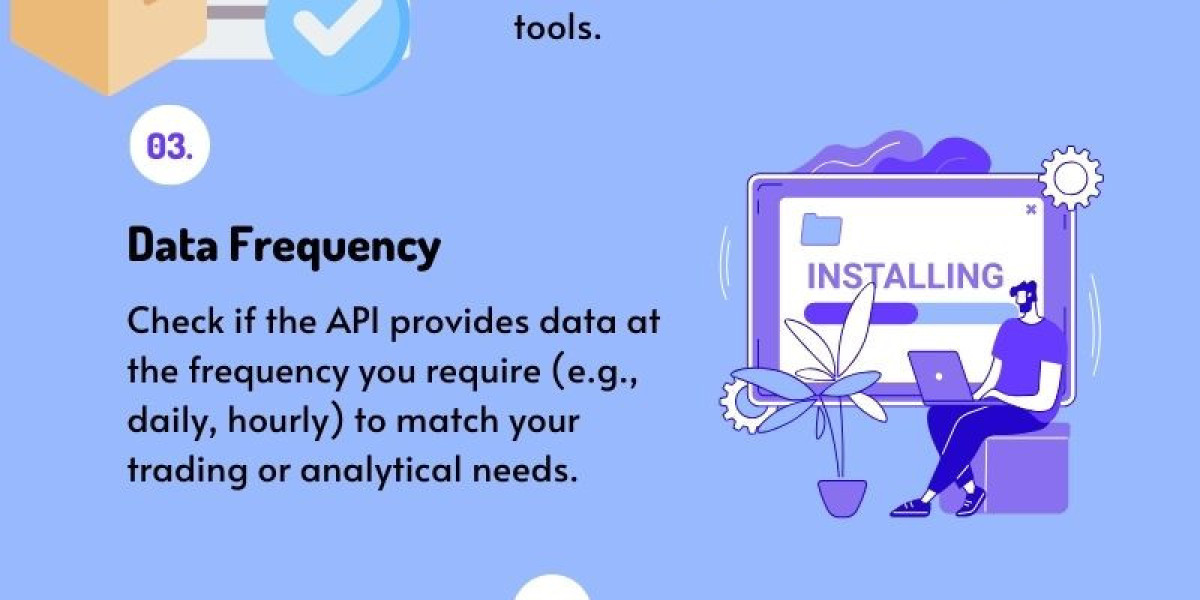Accurate and quick data access is essential in the field of financial markets and investment analysis. In order to make this information available to traders, analysts, and developers alike, stock data APIs are essential. However, your particular needs and the type of application you're using will determine whether you choose a real-time or stock historical data API.
Understanding Real-Time Stock Data APIs
Real-time stock data APIs provide up-to-the-second information on stock prices, trading volumes, bid-ask spreads, and other live market data. These APIs are essential for applications where immediate updates and responsiveness to market fluctuations are critical. Traders executing high-frequency trades, algorithmic trading systems, and real-time financial news platforms rely heavily on real-time data feeds to make split-second decisions.
Benefits of Real-Time Stock Data APIs: Real-time data allows traders to react swiftly to market movements. It supports high-frequency trading strategies that capitalize on minute price changes. Provides accurate and current market depth information for informed trading decisions. Enables developers to build applications that require live data updates, such as stock tickers and live market dashboards.
Challenges of Real-Time Stock Data APIs: Higher costs associated with continuous data updates and premium access. Requires robust infrastructure to handle large volumes of real-time data streams. Dependent on stable internet connectivity to ensure uninterrupted data flow.
Understanding Historical Stock Data APIs
Historical stock data APIs, on the other hand, provide access to archived market data over a specified period. These APIs offer comprehensive datasets of past stock prices, trading volumes, dividends, and corporate actions. Investors, analysts, and researchers utilize historical data to backtest trading strategies, conduct trend analysis, and perform financial modeling.
Benefits of Historical Stock Data APIs: Enables backtesting of trading algorithms and strategies using past market conditions. Supports long-term trend analysis and pattern recognition based on historical price movements. Provides data for building predictive models and conducting quantitative research. Useful for historical performance evaluation of stocks and portfolios.
Challenges of Historical Stock Data APIs: Data accuracy and completeness can vary across providers and datasets. May require data cleaning and normalization to ensure consistency in analysis. Access to comprehensive historical datasets often comes at a premium cost. Updates and maintenance of historical databases to reflect corporate actions and adjustments.
Choosing Between Real-Time and Historical Stock Data APIs
The decision to use real-time or historical stock data APIs depends on your specific use case and application requirements. Here are some factors to consider:
Nature of Application: If your application involves real-time trading, automated trading systems, or live market analysis, a real-time stock data API is indispensable. Conversely, for research-oriented tasks like backtesting strategies, conducting historical analysis, or building predictive models, historical stock data APIs are more suitable.
Cost Considerations: Real-time data APIs typically incur higher costs due to continuous data updates and premium access. Historical data APIs may have lower ongoing costs but can involve significant upfront costs for accessing comprehensive historical datasets.
Data Requirements: Assess the granularity and depth of data required for your application. Real-time APIs provide instantaneous updates on current market conditions, while historical APIs offer deep insights into past market behavior.
In conclusion, the choice between real-time and historical stock data APIs hinges on the specific needs of your application, whether it's real-time trading, algorithmic strategies, or historical research and analysis. Both types of APIs serve distinct purposes in the financial ecosystem, catering to different stakeholders from traders to analysts and developers. Understanding these differences and aligning them with your project goals will help you leverage stock data APIs effectively to enhance your financial applications.
FAQs
What are real-time stock data APIs used for?
Real-time stock data APIs are used for live market monitoring, high-frequency trading, and real-time financial analysis. They provide up-to-the-second updates on stock prices and market movements.
How can historical stock data APIs benefit investors?
Historical stock data APIs enable investors to backtest trading strategies, analyze long-term trends, and evaluate historical performance of stocks and portfolios. They are essential for quantitative research and modeling.
What are the main challenges of using real-time stock data APIs?
Challenges include higher costs associated with continuous data updates, infrastructure requirements for handling real-time data streams, and dependency on stable internet connectivity.
Are historical stock data APIs expensive to access?
Access to comprehensive historical datasets can involve significant upfront costs, though ongoing expenses may be lower compared to real-time data APIs, depending on the provider and dataset depth.








